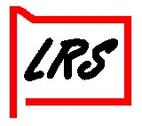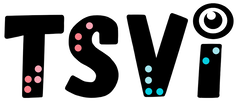- Home
-
Learn
- History of VI >
- Legislation & Laws >
- Vision Professionals >
-
VI Program Resources
>
- Program Printables
- Itinerant Teaching Tips
- Year at a Glance
- VI Program Handbook
- Caseload Analysis
- Organization & Time Management
- Professional Development
- Teacher Standards
- Professional Ethics
- Awards & Recognition
- APH Scholar Program
- Professional Organizations
- Certification Organizations
- Dealing with Challenges
- Professional Publications >
- Relatable Books for All Ages >
- Family Resources >
- Plan
- Basics
-
Teach
- Teaching Strategies >
-
Compensatory Skills Instruction
>
-
Social Skills
>
-
Self Determination
>
- Body Image & Acceptance
- Making Personal Goals
- My Vision Presentation
- My Self-Description
- Create a Personal Data Sheet
- Disclosure Decision
- Disability Statement
- Requesting Help
- Fighting Fears
- My Circle of Support
- Personal Responsibility
- Advocate for Safe Enviroments
- Having Picture Taken
- Coping with Change
- Aging Eyes
- Physical Characteristics
- Political Activism
- Laws Regarding Persons with Disabilities
-
Sensory Efficiency
>
-
Independent Living
>
- Orientation & Mobility Instruction >
- Recreation & Leisure >
-
Career & Vocation
>
-
Grow
- Complete Set Bonus >
-
Recorded Presentations
>
- Webinar: Tips for Being a "Physically Fit" TVI
- Webinar: The Art of Teaching the ECC
- Webinar: Virtual & F2F Strategies
- Webinar: Foundations of Teaching the ECC in the Age of Virtual Instruction
- Webinar: Itinerant Teaching Strategies
- Webinar: Using Themes to Teach the ECC
- Webinar: Conducting a FVLMA
- Webinar: Selecting the Right AT
- Webinar: Developing SMARTER Goals
- Webinar: Determining Service Intensity Using the VISSIT
- Webinar: Activities to Teach the ECC
- Webinar: Accessible Content for BLVI
- Webinar: Accommodations for VI
- Webinar: MIMO Strategies & Activities
- Webinar: SIDPID Strategies & Activities
- Webinar: Standard Course of Study Strategies & Activities
- Webinar: Job Tasks for Job, Career & Life
- Shop
- Jobs
Large Print
|
By: Carmen Willings
teachingvisuallyimpaired.com Students with low vision will frequently need materials to be increased in size. It should not be assumed that all students need large print books or enlarged photocopies of worksheets and handouts. Careful consideration must be made when choosing to use large print. Some advantages and disadvantages need to be considered when deciding as to whether or not to use large print books. Negative Aspects of Large Print BooksDisadvantages to large print books include the limitations in availability, the fact that they are often poorly reproduced with poor contrast, and illustrations are usually difficult to see. Also, their bulky size sets students apart from their peers. They often do not fit on desks or within lockers and backpacks. If a student becomes dependent using large print when low vision devices or non-optical approaches would allow him or her to read print efficiently, then, the student’s access to print materials is restricted to those situations when large print is available.
Some students, depending on the functional implications of their eye condition or difficulty with body positioning, will be at a disadvantage by unnecessary enlargement. Therefore, the idea that “bigger is better” is not always true. Particularly when it creates a larger area to scan. This is especially true for students who have a difficult time with neck or head control as it creates a larger area for them to move to see. This is true because the larger the material, the wider the head sweep needed to view the material. If a student becomes dependent using large print when low vision devices or non-optical approaches would allow him or her to read print efficiently, then, the student’s access to print materials is restricted to those situations when large print is available. Finally, students that are planning to attend college need to be aware that there will be no braille and no or minimal large print texts in college. Students will need to be able to comfortably and efficiently use recorded textbooks or magnification devices. Teaching a student to use prescribed low vision devices or non-optical strategies are typically more efficient as it places the student in control and allows them to access any printed materials and not just materials that have been adapted for them. Remember that students should be encouraged to utilize the smallest amount of magnification necessary to comfortably function and perform tasks. By providing the student with a variety of tools to access print materials, the student is filling their “visual toolbox”. This should include some portable devices for near and distance depending on the needs of the student. Who benefits from large print books?Some students will, however, need large print in some or all situations. Students with poor muscle control, for example, may not be able to have the muscle control to operate optical devices. For students who cannot read regular print at close distances and cannot use low vision devices for motor or other reasons, large type is helpful.
Math workbooks are one area that is perhaps best accessed using large print as they provide a larger area for students to write their responses. It may also be more ideal to provide large print for map worksheets and other diagrams that need to be labeled to allow enough space for the student to write. If the educational team decides that large print is appropriate, remember its quality and typeface is as important to legibility as is its size. Spacing between letters and lines is also important. If you do choose to use large print, it should be at least 16 to 18 points, but keep in mind that the relationship between readability and point size differs somewhat among typefaces. This is very individualized, and some students will need a larger size print. It is also helpful as a transitional tool for students who are switching from print to braille. It may also be necessary to temporarily use it until the student can be evaluated for the potential use of low vision devices and the necessary instruction can be provided with these devices. It is always better to explore alternatives to "large type" first, since they afford greater independence in selecting reading material. If an optical device can enlarge reading material sufficiently, it is preferable to providing "large type books." When special textbooks are provided, the student is limited to reading only what is given to him/her, instead of being able to select whatever appeals to his/her interests." Large Text Resources...
Library Reproduction Service (LRS) is a producer of large print books. It provides Large Print School Books for Visually Impaired and other print-challenged students who are taught in a mainstreamed classroom environment. Their durable hardcover books have been used in schools across the USA for over 45 years. The enlarged page retains the layout and numbering of the original, while the LRS-developed calendar format maintains a small closed-book size along with an 18 point text. Each book is custom-made for the VI student.
Large-print books are commonly ordered for students with low vision, even when their use is unnecessary or restrictive (Koenig, Foundations of Low Vision. 1996). If a student becomes dependent using large print when low vision devices or non-optical approaches would allow him or her to read print efficiently, then the student's access to print materials is restricted to those situations when large print is available." |
History of vi
Visual Impairments
Vi organizations & Agencies
VI book resources
VI Professionals
Professionalism
Instructional Planning
Professional Publications
Educational Programming
Individual Learning Differences
referrals
Medical vision exams
fvlma
additional evaluations
service planning
writing goals
compensatory skills
Guiding Principles Functional Skills Community Based Experiences Concepts to Teach Access to Instruction Organization & Study Skills Time Management Virtual Instruction Movies & Assemblies Lectures & Instruction Board Work (Chalk, White, etc.) Daily Schedule Morning Meeting Weather Check Dramatic Play Blocks Numbers & Counting Cranmer Abacus Instruction Algebra Geometry & Spatial Sense Measurement & Data Early Literacy Experiences Create Tactual Books Reading Instruction Reading Efficiency Science Adaptations Social Studies Adaptations Communication Modes Accessible Educational Materials Individual Schedules & Communication Cards Adjust Lighting Large Print Optical Devices for Near Optical Devices for Distance Optical Device Use Photocopying Font Legibility Increase Contrast Pictures & Worksheets Keyboarding Instruction Word Processing and Shortcuts Navigate Computer w/o a Mouse Braille Code Braille Instruction Braille Instruction Materials Writing Braille Summer Reading (braille) Signature & Handwriting Nemeth Braille Code Tactile Graphics Guidelines Creating Tactile Graphics Tactile Graphics Instruction Teacher Made Materials Labeling System assistive technology
Overview of Assistive Technology VI AT Resources Non-Optical Low Vision Devices Video Magnifiers Video Magnifier Instruction Screen Enlargement & Readers Low/Med. Tech Tactual Devices Notetaker Instruction Braillewriter Repair Tactile Graphics Technology Braille Technology Auditory Access Devices Accessing Audio Books iPads as Instructional Tools Making iOS Device Accessible iOS Accessibility Resources VoiceOver Apps for VI Note Taking apps Apps for Accessing Books Identification Apps Navigation & Location Apps Braille Apps Magnifier Apps Sound Making Apps Cause & Effect Apps Vision Skills Apps Apps for Early Learning Read to Me Story Apps Apps for Communication Android Apps for VI sensory efficiency
Sensory Input Encourage Use of Vision Sensory Area & Rooms Lightbox Use Sensory Activities for Students with Multiple Disabilities Sensory Tables Visual Efficiency Skills Visual Attend and Scan Activities Visual Tracking Activities Visual Discrimination Activities Visual Motor Activities Tactual Readiness Developing Skillful Hands Auditory Readiness Listening Skill Instruction independent living
orientation & Mobility
career education
recreation & Leisure
self determination
|
|
Teaching Students with Visual Impairments LLC
All Rights Reserved |
- Home
-
Learn
- History of VI >
- Legislation & Laws >
- Vision Professionals >
-
VI Program Resources
>
- Program Printables
- Itinerant Teaching Tips
- Year at a Glance
- VI Program Handbook
- Caseload Analysis
- Organization & Time Management
- Professional Development
- Teacher Standards
- Professional Ethics
- Awards & Recognition
- APH Scholar Program
- Professional Organizations
- Certification Organizations
- Dealing with Challenges
- Professional Publications >
- Relatable Books for All Ages >
- Family Resources >
- Plan
- Basics
-
Teach
- Teaching Strategies >
-
Compensatory Skills Instruction
>
-
Social Skills
>
-
Self Determination
>
- Body Image & Acceptance
- Making Personal Goals
- My Vision Presentation
- My Self-Description
- Create a Personal Data Sheet
- Disclosure Decision
- Disability Statement
- Requesting Help
- Fighting Fears
- My Circle of Support
- Personal Responsibility
- Advocate for Safe Enviroments
- Having Picture Taken
- Coping with Change
- Aging Eyes
- Physical Characteristics
- Political Activism
- Laws Regarding Persons with Disabilities
-
Sensory Efficiency
>
-
Independent Living
>
- Orientation & Mobility Instruction >
- Recreation & Leisure >
-
Career & Vocation
>
-
Grow
- Complete Set Bonus >
-
Recorded Presentations
>
- Webinar: Tips for Being a "Physically Fit" TVI
- Webinar: The Art of Teaching the ECC
- Webinar: Virtual & F2F Strategies
- Webinar: Foundations of Teaching the ECC in the Age of Virtual Instruction
- Webinar: Itinerant Teaching Strategies
- Webinar: Using Themes to Teach the ECC
- Webinar: Conducting a FVLMA
- Webinar: Selecting the Right AT
- Webinar: Developing SMARTER Goals
- Webinar: Determining Service Intensity Using the VISSIT
- Webinar: Activities to Teach the ECC
- Webinar: Accessible Content for BLVI
- Webinar: Accommodations for VI
- Webinar: MIMO Strategies & Activities
- Webinar: SIDPID Strategies & Activities
- Webinar: Standard Course of Study Strategies & Activities
- Webinar: Job Tasks for Job, Career & Life
- Shop
- Jobs

